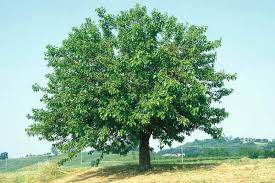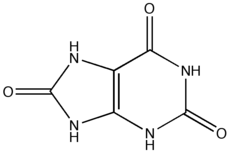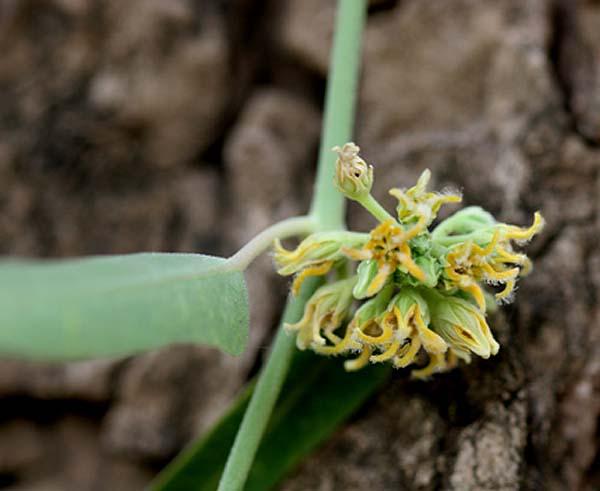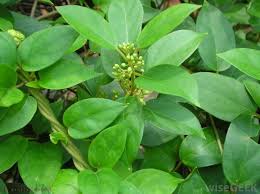
The genus Morus, a genus of flowering plants in the family Moraceae, comprises many species of deciduous trees, also known as mulberry, widely distributed throughout the world. As the primary food source for silkworms, the plant is cultivated in many regions of Asia for silk production.
Morus alba , known as white mulberry, is a short-lived, medium-sized, mulberry tree, native to northern China and widely cultivated both in temperate and tropical areas.
The leaves are ovately shaped, lobed or unlobed; the fruit is white to pinkish colour (in contrast to red or black in most other Morus species), and is a “multiple fruit”: it is formed from a cluster of flowers, each flower produces a fruit and these fruits mature into a single mass.
Fruit as Medicine – Morus fruit (Mulberry), 2003
White Mulberry, 2009
MULBERRY FRUITS

Anthocyaninis
Mulberry fruits contain health promoting phyto-nutrient compounds, like polyphenol pigment antioxidants, minerals and vitamins: in particular they are rich in anthocyanins.
Description
Anthocyanins are water-soluble vacuolar pigments, odorless and flavorless, belonging to a parent class of molecules called flavonoids. They are responsible for the red, purple and blue colors of many fruits, vegetables, cereal grains and flower.

They have long been the subject of investigation by botanists and plant physiologists because of their roles as pollination attractants and phytoprotective agents.
Today, interest in anthocyanin pigments has intensified because of their possible health benefits as dietary antioxidants. They are one class of flavonoid compounds, widely distributed plant polyphenols.
Molecular Mechanism
There is epidemiological evidence that dietary anthocyanin pigments and polyphenolics may have preventive and therapeutic roles in a number of human disease.
Through the much publicized French paradox. , the public has become aware that certain populations of red-wine drinkers in France and Italy have much lower rates of coronary heart disease than their North American and Northern European counterparts. This paradox seems to be explained by the presence of anthocyanins in red wine, which have a protective action against cardiovascular diseases.
Moreover, the anthocyanin pigments have long been used for improving visual acuity (for example during World War II to improve British pilots' night vision).
There is also experimental evidence that certain anthocyanins have anti-inflammatory properties. In the course of inflammation, enzymes damage connective tissue in capillaries causing blood to leak into surrounding tissues; oxidants are released and further damage blood-vessel walls.
Anthocyanins protect in several ways:
- they neutralize enzymes that destroy connective tissue;
- their antioxidant capacity prevents oxidants from damaging connective tissue;
- they repair damaged proteins in the blood-vessel walls.
Anthocyanins' anti-inflammatory ability has been shown to help dampen allergic reactions: in one study, Bulgarian researchers gave animals histamine and serotonin (both of which cause allergic reactions and increase capillary permeability) and the animals were supplemented with a variety of flavonoids. At the end, anthocyanins were found to have the strongest anti-inflammatory effect of any flavonoid tested.
The possible health benefits of Anthocyanin Pigments and Polyphenolics, 2001
Anthocyanins, 2001
Side Effects
There is not enough information yet to make much of an argument about the negative effects of taking anthocyanin supplements. Anthocyanin supplements have been known to lower bad cholesterol, help with memory function, slow down tumor growth, repair broken blood vessels and even improve vision. Anthocynanins have made their way into cancer treatments.
Too much of anything could be bad; it is possible that taking too much anthocyanin may some negative effects down the road. Just because not much information is available at this time doesn't mean there is no bad news on the horizon.
Resveratrol
Mulberry fruits also contain resveratrol .
Description
Resveratrol (3,4',5-trihydroxylstilbene) is a polyphenolic compound also found in grape juice, peanuts and other berries. It belongs to a class of polyphenolic compounds called stillbenes.
Is a fat-soluble compound that occurs in a trans and a cis configuration.

Scientists became interested in exploring potential health benefits of resveratrol in 1992, when its presence was first reported in red wine, leading to speculation that resveratrol, as the anthocyanins, might help explain the “French Paradox”.
Pharmacokinetics
One way of administering resveratrol may be buccal delivery, by direct absorption through tissues on the inside of the mouth. When one milligram of resveratrol in 50 ml 50%alcohol/water solution was retained in the mouth for one minute before swallowing, only 37 ng/ml of free resveratrol were measured in plasma 2 minutes later. The low acqueous solubility of resveratrol greatly limits the amount that can be absorbed through the buccal mucosa.
Resveratrol, wikipedia
Molecular Mechanism
It has several biological activities:
- direct antioxidant activity → in vitro resveratrol effectively scavenges (neutralizes) free radicals and other oxidants, and inhibits LDL (low density lipoprotein) oxidation. In vivo there is little evidence that resveratrol is an important antioxidant: upon oral consumption, circulating and intracellular levels of resveratrol in humans are likely to be much lower than that of other important antioxidants (vitamin C, uric acid, vitamin E and glutathione);
- cardiovascular disease prevention → resveratrol play this role in different ways:
- it inhibits vascular cell adhesion molecule expression (one of the earliest events in the development of atherosclerosis – an inflammatory disease associated with increased risk of myocardial infarction – is the recruitment of inflammatory white blood cells from the blood to the arterial wall by vascular cell adhesion molecules);
- it inhibits vascular smooth muscle cell proliferation (in fact, their proliferation plays an important role in the progression of atherosclerosis);
- it stimulates eNOS (endothelial Nitric Oxide Synthase) activity (eNOS is an enzyme that catalyzes the formation of nitric oxide, NO, needed to maintain arterial relaxation: impaired NO-dependent vasodilatation is associated with increased risk of cardiovascular disease);
- it inhibits platelet aggregation (that is one of the first steps in the formation of a blood clot that can occlude a coronary or cerebral artery, resulting in myocardial infarction or stroke)
Resveratrol, 2005
Side Effects
Long-term effects of using resveratrol are currently unknown.
- One study has theorized it may stimulate the growth of human breast cancer cells, possibly because of resveratrol's chemical structure, which is similar to a phytoestrogen.
- Other studies have found resveratrol intake is inversely associated with breast cancer risk, however, and acts to slow the progression of breast cancer that has been transplanted into mice.
- Some studies suggest resveratrol slows the development of blood vessels, which suppresses tumors, but also slows healing.
- Citing the evidence that resveratrol is estrogen antagonistic, some retailers of resveratrol advise that the compound may interfere with oral contraceptives and that women who are pregnant or intending to become pregnant should not use the product, while others advise that resveratrol should not be taken by children or young adults under eighteen, as no studies have shown how it affects their natural development. A small study found a single dose of up to 5 g of trans-resveratrol caused no serious adverse effects in healthy volunteers.
Potential carcinogenicity
Resveratrol in common with other polyphenols, was found to be a strong topoisomerase inhibitor, sharing similarities to chemotherapeutic anticancer drugs, such as etoposide and doxorubicin. This may simultaneously contribute to both the potential anticarcinogenic and carcinogenic properties of the substance in given circumstances. Harmful properties of resveratrol may be pronounced in the human fetus, as it has diminished detoxification systems. Therefore, resveratrol as commonly sold combined with other "bioflavonoids", should not be used by pregnant women.
MULBERRY LEAVES

Flavonoids
The leaves contain proteins, used with wheat flour to make bread in India. They also contain ascorbic acid, beta-carotenes, iron, zinc, calcium, phosphorous and magnesium, and several antioxidative flavonoids.
Description
Flavonoids are a large family of compounds synthesized by plants that have a common chemical structure, with three heterocycles, generally called ring A, B and C. They are a class of plant secondary metabolites, classified into:
- flavonoids;
- isoflavonoids;
- neoflavonoids.
Flavonoids are widely distributed in plants and have many functions: they are the most important plant pigments for flower coloration, they are involved in UV filtration and they act as chemical messengers and cell cycle inhibitors.

Moleular Mechanism
The flavonoids have aroused considerable interest recently because of their potential beneficial effects on human health: they have been reported to have antiviral, anti-allergic, antiplatelet, anti-inflammatory, antitumor and antioxidant activities (their antioxidant activity is due to their ability to reduce free radical formation and to scavenge free radicals).
Flavonoids are important because they may help provide protection against diseases linked to cellular damage induced by oxidative stress (cancer, aging, atherosclerosis, ischemic injury, inflammation and neurodegenerative diseases) by contributing, along with antioxidant vitamins and enzymes, to the total antioxidant defense system of the human body.
Flavonoids are effective scavengers of free radicals in vitro. However, even with very high flavonoid intakes, plasma and intracellular flavonoid concentrations in humans are likely to be 100-1.000 times lower than concentrations of other antioxidants (suche as vitamin C, uric acid or glutathione). Moreover, most circulating flavonoids are actually flavonoid metabolites, some of which have lower antioxidant activity than the parten flavonoid.
But flavonoid can also indirectly act on the control of oxidizing agents, playing as a metal chelator. Metal ions, such as iron and copper, can catalyze the production of free radicals. Furthermore, metal ions can catalyze the oxidation of LDL (low-density lipoprotein); their oxidation has been recognized to play an important role in atherosclerosis: immune system cells called “macrophages” recognize and engulf oxidized LDL, a process that leads to the formation of atherosclerotic plaques in the arterial wall.
Several studies have shown that certain flavonoids (Quercetin, Xanthohumol, Isoxanthohumol and Genistein) can protect LDL from being oxidized: they act as metal chelators, bounding to their structure iron and copper, limiting their partecipation in reactions that produce free radicals and LDL oxidized.
The capacity of flavonoids to act as antioxidants in vitro has been the subject of several studies in the past years, and important structure-activity relationships of the antioxidant activity have been established. The antioxidant efficacy of flavonoids in vivo is less documented, presumably because of the limited knowledge on their uptake in humans.
Antioxidant Activities of Flavonoids, 2000
Flavonoids as Antioxidants, 2000
Flavonoids, 2000
Mulberry and Diabetes
Diabetes mellitus is a chronic metabolic disease with the highest rates of prevalence and mortality in both developed and developing countries.
It has been reported to associate with oxidative damage, although the leading mechanism of diabetic complications remains unclear.
There are two important diabetic prevention strategies:
- prevention of oxidative damage with natural antioxidants;
- control of postprandial hyperglycemia, by inibiting digestive enzymes such as α-glucosidase (a main glucosidase hydrolases, found on the luminal surface of the enterocytes).
That's why phenolic phytochemical which function as chemopreventive agents against oxidative damage have attracted growing public attention: consumption of fruits and vegetables rich of phenolics has been linked to decreasing risk of developing chronic diseases.
Consumption of mulberry fruit has been linked to the prevention of various chronic diseases: mulberry extract has been reported to have potent antioxidant activity, antitumor activity, hypolipidemic effect, macrophage activating effect and neuroprotective activity. Many of these bioactivities were linked to the presence of phenolics in mulberry fruit.
Despite the various biological activities of mulberry fruit extracts, the bioactive constituents responsible for its antidiabetic and antioxidant activities are not clear yet.
Preventing Effects on Diabetes
Components of Morus alba can help preventing diabetes in two ways:
- anthocyanins present in Morus' leaves can help preventing islet degeneration.
Islet of Langerhans are regions of the pancreas formed by its endocrine cells, and constitute 1% to 2% of the mass of the pancreas. They contain at least 5 types of cells, some of which secrete two hormones involved in the regulation of glycemia:
- alpha cells produce glucagon , an hyperglycaemic peptide: it raises blood glucose levels;
- beta cells produce insulin , an hypoglycaemic peptide: it causes cells in liver, skeletal muscles and fat tissue to absorb glucose from the blood.
The beta cells in the islets of Langerhans are selectively destroyed by an autoimmune process in type 1 diabetes. This events cause insulin deficiency, that leads to increased blood and urine glucose.
The mulberry plant (Morus alba) contains abundand anthocyanins which are natural antioxidant and, in 2013, the results of a study on preventive effects of anthocyanins on diabetes were published. This study demonstrated that anthocyanins extracted from Morus alba exhibited effective anti-diabetic properties in animals, because prevented islet degeneration.
Preventive effects of Morus alba L. anthocyanins on diabetes in Zucker diabetic fatty rats, 2013 ;

Blood glucose levels of Zucker diabetic fatty (ZDF) and lean ZDF rats treated with 125 or 250 mg/kg anthocyanin (ANC)
- Morus has an antihyperuricemic activity.

Hyperuricemia is a level of uric acid in the blood that is abnormally high, and is caused by meny factors, including: genetics, insulin resistance, hypertension, renal insufficiency, obesity, diet, use of diuretics and consumption of alcoholic beverages.
Hyperuricemia often leads to metabolic syndrome, a disorder of energy utilization and storage, that increases the risk of developing cardiovascular disease, particulary heart failure and diabetes.
L'acido urico: fatti e misfatti, 2010
Considering that type 2 diabetes and hyperuricemia are vice-versa in each other's important risk factors, the use of mulberry originated phytotherapeutics seems to be an excellent option for the prevention and/or treatment of both conditions.
Metabolic effects of mulberry leaves: exploring potential benefits in type 2 diabetes and hyperuricemia, 2013]
Potential Benefits in Diabetes
- Mulberry leaves have alpha-glucosidase inibitory effect.
Alpha-glucosidase is a glucosidase that acts upon 1,4-alpha bonds, breaking down starch and disaccharides to glucose.
One important diabetic prevention strategy is the inibition of digestive enzymes, such as alpha-glucosidase, in order to suppress postprandial hyperglycemia in non-insulin dependent diabetes mellitus patients: this inibition lowers the rate of glucose absorption.
It has been demonstred that hot water extract of mulberry leaves does have inibitory effect against alpha-glucosidases, sucrase and maltase enzymes, and has a potential to be consumed as antidiabetic herb tea.
Alpha-glucosidase inhibitory effect of mulberry (Morus alba) leaves on Caco-2, 2006
- Mulberry leaf extract stimulates glucose uptake and GLUT4 translocation.
Glucose transporter type 4 (GLUT4) is an insulin-regulated glucose transporter, found in adipose tissues and striated muscles, the major tissues in the body that respond to insulin.
Under conditions of low insulin, GLUT4 is sequestred in intracellular vescicles in cells; insulin induces a rapid increase in the uptake of glucose by inducing the translocation of GLUT4 from these vescicles to the plasma membrane. That's how GLUT4 is important in reducing hyperglicemia.
The antihyperglycemic action of Morus alba is mediated by increasing glucose uptake via the activation of PI3-K signaling pathway and translocation of GLUT4 to the plasma membrane.
Mulberry leaf extract stimulates glucose uptake and GLUT4 translocation in rat adipocytes, 2012 :
- Mulberry leaf extract increases adiponectin in murine adipocytes.
Adiponectin is a protein involved in regulating glucose levels as well as fatty acid breakdown. Is secreted from adipose tissue.
Mulberry leaf extract has a stimulatory effect on adipocytes proliferation, and up-regulates adipogenic transcription factors and gene expression, increasing adiponectin secretion, which consequently decreases blood glucose.
Mulberry leaf extract increases adiponectin in murine 3T3-L1 adipocytes, 2011

Effect of MA on lipid accumulation in 3T3-L1 preadipocytes. 3T3-L1 preadipocytes on day 8 of treatment with 1 to 45 μg/mL MA were stained with Oil Red O (A). Quantification of lipid accumulation was based on the optical density values (at 500 nm) of destained Oil Red O extracted from the adipocytes (B). Mulberry leaf extract (5, 15, and 45 μg/mL) significantly increased lipid accumulation.
Effects on Treatment of Diabetes' Complications
- Anthocyanins' effects on blood-vessels can be useful in case of diabetes: microvessel damage from high blood-sugar levels causes most of diabetes' complications.
- collagen proteins become linked with sugars, resulting in an abnormal polymeric blood vessel collagen.
In one German study, 12 adult diabetics took 600 mg anthocyanins daily for two months, and samples of their gum tissue were taken before and after the treatment. After two months, abnormal collagen production was significantly decreased;
- diabetes renders capillaries more permeable to large molecules than they should be: for instance, the protein albumin migrates into the space between cells and is not adequately taken up by the lymphatic system.
In a recent French study, researchers using an animal diabetic model found that those treated with anthocyanins maintained normal microcirculatory function, including normal capillary filtration of albumin and its uptake by the lymphatic system.
Anthocyanins, 2011
- Mulberry leaf extract restores arterial pressure in diabetic rats.
Free radical-induced vascular dysfunction plays a key role in the pathogenesis of vascular disease found in chronic diabetic patients.
It has been demonstred that long-term treatment with Morus alba improves vascular reactivity of chronic diabetic rats.
Mulberry leaf extract restores arterial pressure in streptozotocin-induced chronic diabetic rats,2009
- Flavonoids present in mulberry leaves can reduce inflammatory responses in T2D, like LDL-oxidation.
Flavonoid canindirectly act on the control of oxidizing agents, playing as a metal chelator. Metal ions, such as iron and copper, can catalyze the production of free radicals. Furthermore, metal ions can catalyze the oxidation of LDL (low-density lipoprotein); their oxidation has been recognized to play an important role in atherosclerosis: immune system cells called “macrophages” recognize and engulf oxidized LDL, a process that leads to the formation of atherosclerotic plaques in the arterial wall.
Several studies have shown that certain flavonoids (Quercetin, Xanthohumol, Isoxanthohumol and Genistein) can protect LDL from being oxidized: they act as metal chelators, bounding to their structure iron and copper, limiting their partecipation in reactions that produce free radicals and LDL oxidized.
A six-month supplementation of mulberry, korean red ginseng, and banaba decreases biomarkers of systemic low-grade inflammation in subjects with impaired glucose tolerance and type 2 diabetes, 2012
Other Phytotherapics and Diabetes
Herbal medicines are frequently used as treatment for diabetes in most cultures. More than 1200 species of plants have traditionally been used fot their hypoglycemic effects. However, no convincing data exist, demonstrating effectiveness for any of the remedies in question.
Theoretically, plant medicines could act as hypoclycemic agents through a variety of mechanisms: in the case of plants with high fiber content, glucose absorption might be retardet; further possible mechanisms might involve alterations in the sensitivity or sinthesis of insulin, inhibition of insulin or its enzymatic breakdown.

Is a widely distributed in tropical Africa herb. Its root extract seems to have antidiabetic and hypoglycaemic activity: it reduces the blood glucose level in induced diabetic rats.
The possible mechanism includes the stimulation of beta-cells and subsequent release of insulin and activation of insulin receptors. It may also be due to the enhancement of transport of blood glucose to the peripheal tissue. It can also be linked to the inhibition of the alpha-glucosidase activity.
Hypoglycaemic and Hypolipidaemic Effects of Leptadenia hastata (Pers.) Decne in Alloxan Induced Diabetic Rats

This plant has been used for ove 2000 years in Ayurvedic medicine to treat “excess blood sugars” or “sweet urine”: diabetes. Several mechanisms could contribute to the gymnema antidiabetic effects: it increases the releases of insulin from beta-cells in the pancreas; increases the uptake of glucose into the cells; reduce glucose absorption from the intestine.

It contains ginsenoides that promote an insulin release and increases the number of insulin receptors. It also contain glycans which have hypoglycemic activity through an increase of insulin secretion from pancreatic islets. It reduced blood glucose levels in patients with Type II Diabetes mellitus.
- ALOE BARBADENSIS (ALOE VERA)

Is a cactus-like plant that grows in hot, dry climates and currently cultivated in large quantities. Experiments in rats have shown that A. vera gel extract was hyperglycemic, while A. vera leaf pulp extract has hypoglycemic activity.
Phytotherapy: A Quick Reference to Herbal Medicine
Authors: Giulia Natta, Chiara Rinaldi.